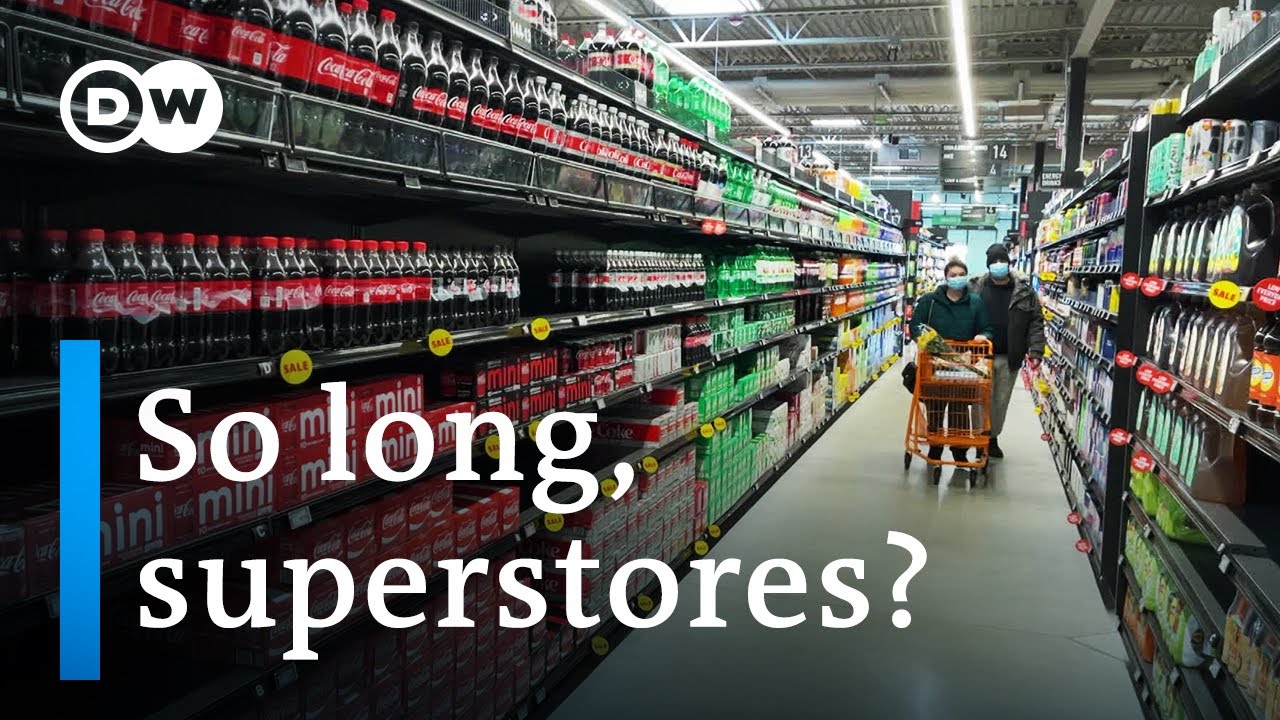Consumers across Europe no longer want to travel to big car-dependent hypermarkets on the edge of cities to buy food and goods. Here’s why.
This is actually an older ARTE documentary. Not sure when I saw it first but probably 2015ish?
The problem is not so much that people don’t use these super-stores anymore, but rather that food items alone have a too low margins to support these capital intensive super-stores and the high-margin non-food items have largely moved to online shops.
@poVoq @ajsadauskas@lemmy.ml Here’s the link for people following along on Mastodon: https://youtu.be/ymxG4wOP7fk
What you said is interesting, because in Australia we’ve pretty much avoided the all-in-one hypermarket model. As in, the general merchandise department stores remain separate to the supermarkets.
We have two chains (Coles and Woolworths) that, between them, make up around 80% of the supermarket market. And unlike the US, most suburban shopping centres have stores from both chains.
Anyway, from your experience, has there been a move away from hypermarkets in Europe?
Here in Europe the mixed shopping mall model has seen a similar decline though. Sure, the food only super-market chains in them are still surviving on the lower margin, but the other shops around them are slowly dying and the entire model is probably not going to survive another decade.
What we see instead is a no-frills budget super-market model (not quite hyper-market like) like ALDI/LIDL that can survive on low margins (but is exploiting farmers and other suppliers) and the small inner-city stores on a 7eleven model that charge significantly higher prices across all items. And of course a lot of online shopping especially in the more rural area, which comes with it’s own set of problems.
@poVoq The response in Australia from the big two supermarket chains has basically been to cut back their range. In most product categories, you’ll now find just the supermarket brand, and maybe one or two other brands.
Aldi and CostCo have entered the Australian market, but they’re only relatively small players. Ironically, there used to be a couple of fairly strong discount supermarket chains (Franklin’s No Frills and BiLo) around 20 years ago, but they ended up being bought out by the big chains, and now no longer exist.
With shopping centres, one of the differences between Melbourne and Sydney is that in Sydney, almost all of the big ones (with a few exceptions) are right next door to a train station. In Melbourne, only a few are.
Obviously, the ones next to train stations seem to be performing better. Most are anchored by both of the major supermarkets, which seems to drive foot traffic.
The other trend that’s emerged in the past year or so is that some shopping centres are getting redeveloped to include offices and apartments, because land is so expensive.
Box Hill Central is an example: https://www.urban.com.au/news/vic/vicinity-secures-approval-for-first-stage-of-box-hill-central-redevelopment
New centres like Central Park in Sydney also have apartments: https://www.domain.com.au/news/fairytale-ending-the-last-piece-of-sydneys-central-park-puzzle-is-ready-20160729-gqdskn/
YouTube links were detected in your comment. Here are links to the same videos on Invidious, which is a YouTube frontend that protects your privacy:
Link 1:
Link 2:
A YouTube link was detected in your post. Here are links to the same video on Invidious, which is a YouTube frontend that protects your privacy:
A YouTube link was detected in your post. Here are links to the same video on Invidious, which is a YouTube frontend that protects your privacy:
A YouTube link was detected in your post. Here are links to the same video on Invidious, which is a YouTube frontend that protects your privacy:
A YouTube link was detected in your post. Here are links to the same video on Invidious, which is a YouTube frontend that protects your privacy:





